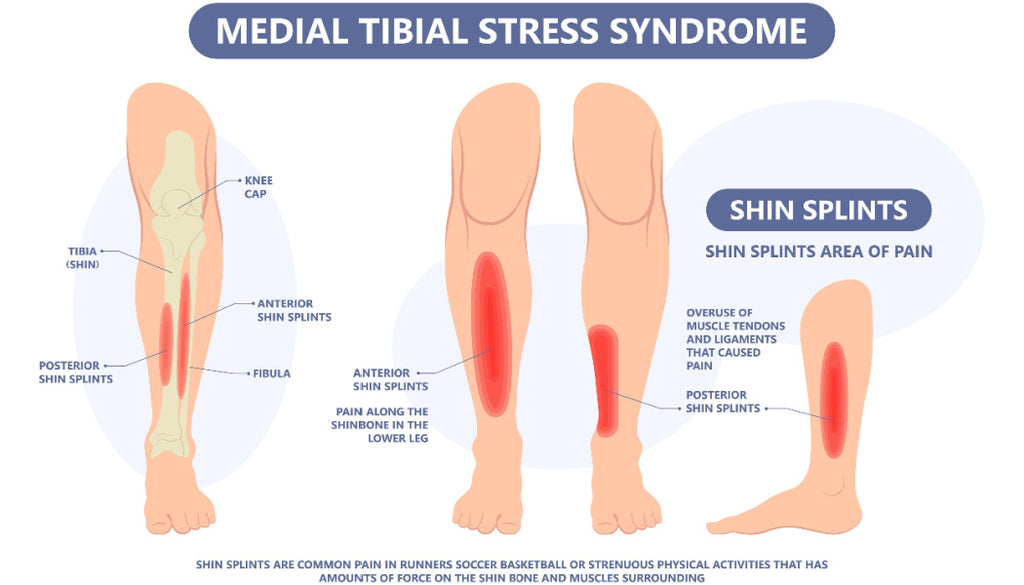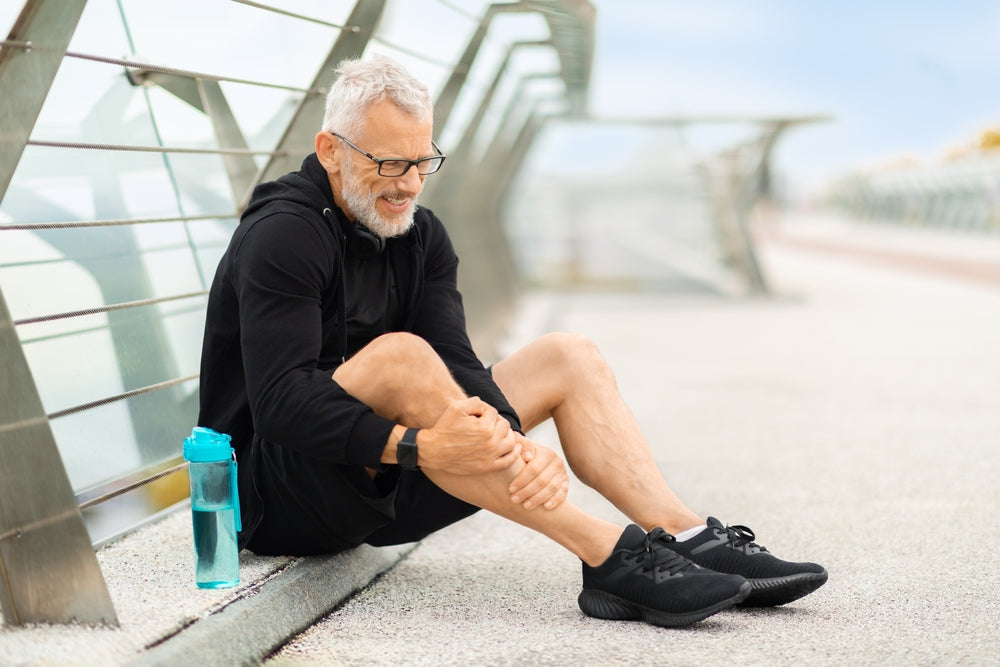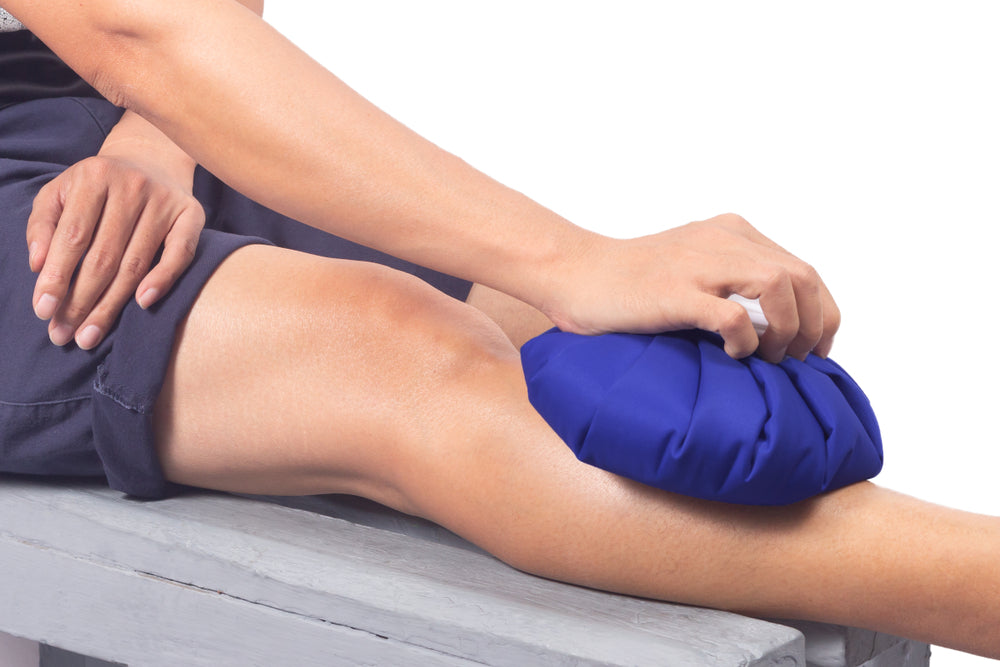Shin splints, or medial tibial stress syndrome, are common running injuries that are often a painful condition that can affect athletes and active individuals. They occur when the muscles and tendons surrounding the shinbone become inflamed due to repetitive stress or overuse. While shin splints can be frustrating, the good news is that they are typically preventable with the right approach.
In this article, we’ll explain what causes shin splints, and we will discuss some effective strategies for preventing shin splints, including proper stretching, strengthening exercises, and training techniques.
What are Shin Splints?
Shin splints are characterized by pain along the inner edge of the shinbone (tibia), and can result from overuse, improper footwear, running on hard surfaces, or muscle imbalances.
- – Pain
- – Tenderness
- – Swelling along the shinbone
Rest, ice, proper footwear, and stretching exercises are often recommended for treatment. Severe cases may require medical attention.

Risk Factors of Developing Shin Splints
Shin splints most commonly affect athletes and people who participate in activities that involve repetitive stress on the lower legs, such as runners, dancers, military recruits, etc.
Several factors can increase the risk of developing shin splints, including:
— Overuse: Engaging in activities that involve repetitive stress on the shinbone without allowing enough time for recovery.
— Beginners: New runners whose bones, muscles, and ligaments have not gradually adjusted to the types of stress caused by running are more susceptible to shin splints.
— Flat feet or high arches: These foot types can lead to improper weight distribution and biomechanics, increasing the stress on the shinbone.
— Improper biomechanics: Issues with the alignment or movement of the feet, ankles, knees, or hips can increase stress on the shinbone.

— Improper footwear: Wearing shoes that don’t provide enough support or cushioning for the feet.
— Sudden increase in activity: Quickly ramping up the intensity, duration, or frequency of exercise can strain the muscles and bones.
— Running on hard or uneven surfaces: Frequent running on surfaces like concrete or uneven terrain increases shin splint risks.
— Muscle weakness or inflexibility: Weak or inflexible muscles in the lower leg can increase the risk of shin splints.
— Age: Shin splints are more common in younger athletes whose bones are still developing and in older adults who may have reduced bone density.

— Gender: Women are more likely to develop shin splints, possibly due to differences in bone structure, muscle mass, and hormonal factors.
— Overweight: People who are obese or overweight are more likely to develop shin splints, and should take a healthy diet combined with physical activity to lose weight before they start an organized training program that involves running.
— History of shin splints: Having experienced shin splints in the past increases the likelihood of developing them again.
Signs and Symptoms of Shin Splints
Shin splints are preventable if you take action as soon as you notice any of the following tell-tale signs:
1. Leg pain along the inner edge of the shinbone (tibia)
2. Tenderness or soreness along the shinbone
3. Mild swelling in the lower leg
4. Pain that worsens with activity
5. Pain that eases with rest
6. The pain of shin splints is dull or aching at first, but may become sharp or throbbing with continued activity
It’s important to note that if you experience severe pain, swelling that doesn’t improve with rest, or pain that occurs even at rest, you should consult a medical professional, as these may be signs of a more serious condition such as a stress fracture.
Important Note about Chronic Exertional Compartment Syndrome
Chronic Exertional Compartment Syndrome (CECS) and shin splits are often confused. While CECS and shin splints can both cause pain in the lower leg, they are distinct conditions with different causes.
CECS is more specifically related to increased pressure within a muscle compartment during exercise, whereas shin splints are more related to overuse and inflammation of the muscles and tissues in the lower leg.
However, the symptoms of both conditions can overlap, so it’s important to consult a healthcare professional for an accurate diagnosis and appropriate treatment.
How to Prevent Shin Splints
Shin splints can be prevented by smarter training and taking the following measures:
1. Gradual Progression
Gradually increase the intensity, duration, and frequency of exercise to avoid overloading the shinbones.
2. Proper Footwear
Wear supportive, well-fitting running shoes appropriate for your activity, and replace them regularly.
3. Surface Selection
Whenever possible, choose softer surfaces for running and avoid hard or uneven surfaces.
4. Stretching
Stretch the calf muscles and Achilles tendon regularly to maintain flexibility.
5. Strength Training
Strengthen the foot and lower leg muscles to provide better support and shock absorption, but also the muscles of the core, hips, glutes, and upper legs.

6. Cross-Training
Incorporate low-impact activities like swimming, cycling, or using an elliptical machine in your training regime to reduce the stress on your shins.
7. Rest and Recovery
Allow adequate time for rest and recovery between workouts to prevent overuse injuries.
8. Proper Running Technique
Maintain proper running and exercise techniques to reduce strain on the shins.
9. Orthotic Support
Consider using orthotic shoe inserts to correct foot mechanics and reduce stress on the shinbone.
10. Warm-Up and Cool-Down
Always warm up before exercise and cool down afterward to prepare your muscles and reduce the risk of injury.
Common Errors that Cause Shin Splints
Typical technique and training errors that can contribute to shin splints in runners include:
1. Overstriding
Landing with your foot too far in front of your body can increase the impact on your shins.
2. Heel Striking
Striking the ground with your heel first, especially when overstriding, can increase stress on the shins.
3. Lack of Ankle Dorsiflexion
Inadequate flexibility in the ankle, specifically limited dorsiflexion (bringing the foot toward the shin), can increase strain on the shin muscles.
4. Excessive Pronation
Overpronation, where the foot rolls inward excessively during the gait cycle, can lead to increased stress on the shinbone.
5. Tightrope Running
Researchers have determined that both stride length and stride width influence the stress impact on the tibia while running. A study published in the Journal of Biomechanics in 2014 indicates
a link between tibial stress fractures and narrow step width.
Runners with a crossover-like running style, comparable to walking on a tightrope, significantly reduced the tension on their tibia by widening their steps by just 5 percent.
6. Running Form
Running technique errors include running with a rigid posture, excessive bouncing, or excessive twisting of the torso, all of which can increase the risk of shin splints.
7. Inadequate Rest and Recovery
Not allowing enough time for
rest and recovery between runs can lead to overuse injuries, including shin splints.
8. Improper Footwear
Wearing shoes that are worn out or not suitable for your foot type and running style can contribute to shin splints.
9. Training Errors
Increasing mileage or intensity too quickly without proper progression can overload the muscles and bones, leading to shin splints.
10. Running on Hard Surfaces
Regularly running on hard surfaces like concrete can increase the impact on your shins.
11. Ignoring pain
Continuing to run through shin pain without addressing the underlying cause can lead to more serious injuries.
Stretches and Strength Training to Prevent Shin Splints
Stretching exercises that target the calf muscles, shin muscles, and Achilles tendon can help prevent shin splints.
Here are some effective stretches:
-
Calf stretch: Stand facing a wall with your hands against the wall at shoulder height. Step one foot back, keeping it straight, and press the heel into the floor. Lean forward slightly until you feel a stretch in your calf. Hold for 15–30 seconds and switch sides.
-
Soleus stretch: This stretch targets the deeper calf muscle. Perform a calf stretch as described above, but bend the back knee slightly. You should feel the stretch lower down in the calf.
-
Toe raises: Stand with your feet hip-width apart and slowly raise up onto your toes. Hold for a few seconds, then lower back down. Repeat 10–15 times.
-
Heel raises: Put your weight on the balls of your feet and mid-foot, then slowly lift your heels, hold for 10–20 seconds, and bring them back down.
-
Towel stretch: Sit on the floor with your legs straight out in front of you. Loop a towel around the ball of one foot and gently pull the towel towards you, keeping your knee straight. Hold for 15–30 seconds and switch sides.
-
Tibialis anterior stretch: Sit on your heels with your toes pointed behind you. Lean back slightly, using your hands for support, until you feel a stretch in the front of your shins. Hold for 15–30 seconds.
-
Ankle circles: Sit or stand and lift one foot off the ground. Rotate your ankle in a circular motion, first in one direction and then the other. Repeat 10 times in each direction, then switch feet.
Include these stretches in your exercise routine, and perform them regularly, especially before and after running or other high-impact activities, to help prevent shin splints.
Strength Training
Although the calves are the key muscles affected by shin splints, they are not the only muscles to train.
The main shock absorbers also include the quads, hamstrings, and glutes.
Furthermore, core and hip-stabilizing exercises will improve your running alignment, and can help prevent the drop in your hips that can contribute to shin splints,
Aim to strength train twice a week, including exercises such as clamshells, walking lunges, glute bridges, side planks, and star-toe taps in your routine.
How Can Athletes Treat Shin Splints?
While you can relieve the symptoms of shin splints, you need to give your bones and muscles time to heal. Shin splints treatment usually includes a combination of the following measures:
— Rest: Stop the activity that caused the shin splints and allow the legs to rest. Switch to low-impact activities like swimming or cycling if possible.

— Ice: Apply ice packs to the affected area for 15–20 minutes several times a day to reduce pain and inflammation.
— Compression: Use compression wraps or socks to help reduce swelling and provide support to the shin.
— Elevation: Elevate the legs to reduce swelling.
— Pain relief: Over-the-counter (OTC) non-steroidal anti-inflammatory drugs (NSAIDs) such as ibuprofen can help reduce pain and inflammation.
— Proper footwear: Ensure you’re wearing supportive, well-fitting shoes appropriate for your activity.

— Orthotics: Consider using orthopedic insoles or shoe inserts to correct foot mechanics and reduce stress on the shinbone.
— Gradual return to activity: Slowly reintroduce the activity that caused the shin splints, and ensure proper warm-up and cool-down routines are followed.
— Professional evaluation: If the shin splints persist or are severe, see a healthcare provider for evaluation and treatment recommendations, which might include physical therapy.
Related Reading:
How to Control Breathing while Running
Conclusion
In conclusion, preventing shin splints requires a multifaceted approach that addresses both the biomechanical and training factors that contribute to this condition.
By incorporating proper stretching and strengthening exercises into your routine, wearing appropriate footwear, and gradually increasing the intensity of your workouts, you can reduce your risk of developing shin splints.
If you do experience shin pain, it’s important to listen to your body and seek medical attention if needed. With these preventive measures in place, you can continue to enjoy your favorite activities pain-free.


